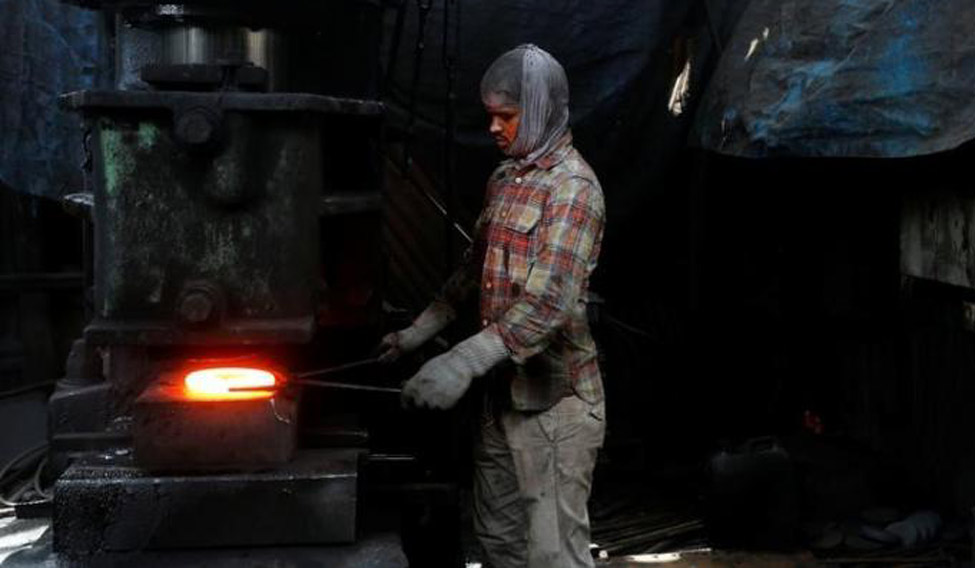The first advance estimate of the economy's growth in the current fiscal, as indicated by central statistics Office numbers, shows a deep impact on the economy. But experts believe it could still have the underlying power to finish on a better note from where it started this year.
The 50 basis point slowdown in economic growth is primarily seen as an impact on both formal and informal economy, following a year marked by a trifecta of reasons like lingering effects of note ban, transitionary impact of GST and weak farm output.
The CSO office itself has pegged growth to be lower at 6.5 per cent this year. A climb down from its earlier projection of 7.1 per cent in 2017 fiscal and a steep deceleration from 8 per cent growth achieved in fiscal 2016.
"Share of investments in GDP declined to 29 per cent from 29.5 per cent last fiscal. This suggests that there are still large underutilised capacities in manufacturing and stretched corporate balance sheets are deterring private capex revival," said Dharmakirti Joshi, chief economist, at corporate ratings firm CRISIL.
"Companies prefer to use their profits to pare down the debt rather than invest it," he said. Joshi maintained in a report that the Rs 2.11 lakh bank recapitalisation plan would mean that banks would support growth.
Asked about the lower manufacturing numbers, which has slowed sharply (to 4.6 per cent from 7.9 per cent earlier), TCA Anant, chief statistician to the Union government, said that the manufacturers had anticipated introduction of GST from July 1, and had cut output accordingly.
"This resulted in the slowdown you are seeing in manufacturing," said Anant. He said in the current financial year, economic growth had started off lower at 5.7 per cent in the first quarter. This was followed by a jump to 6.3 per cent in the second quarter.
"The last quarter of this year should show that quarterly growth is above seven per cent. And we think it will be at seven or higher for the last quarter of this year," said Anant, addressing a press conference after the data release on Friday.
Among the worrylines, as seen by the CSO numbers, are a slowing down of investments, or Gross Fixed Capital Formation (GFCF). Investments slowed from 32.6 per cent of GDP (Rs 37.65 lakh crore by 2011-12 prices) in 2014, to 29 per cent (Rs 36 lakh crore) in the current year.
While exports contribution to GDP remained the same as last year, imports contribution is estimated to have increased from 2.3 per cent (at current prices) last year to 10 per cent this year, the data showed.
Agriculture and allied industries are estimated to be growing by just 2.1 per cent in this year, as compared to 4.9 per cent in the previous fiscal. According to CSO officials, the grinding halt in agriculture does not reflect the overall farm output numbers, which could mark a record year in agri-output.
Industry experts, however, suggested that the government would do well to live up to Prime Minister Narendra Modi's commitment to double farmer's income by 2022.
"Farmers have reached the end of the cliff. The government also realises that, and this time we are expecting a strong focus on rural-economy in the budget," said M.K. Dhanuka, managing director, Dhanuka Agritech.
Private consumption, which was seen to be strongly supporting the economy last year with 8.7 per cent growth registered (at current prices), is seen to slow this year to 6.3 per cent, as per the GDP first advance estimate numbers of CSO.
"Private consumption seems to be what the government is banking on in the current year. If it still grows as estimated over the very big base achieved last year, it could still be formidable," said S.P. Sharma, chief economist, at PHD Chamber of Commerce and Industry.






